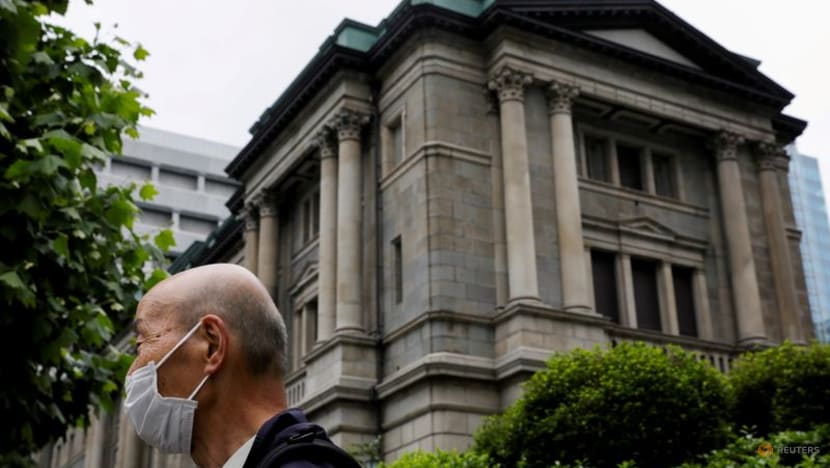What does Japan's record US$490 billion stimulus package look like?

FILE PHOTO: A man stands in front of the headquarters of Bank of Japan in Tokyo, Japan, May 22, 2020. REUTERS/Kim Kyung-Hoon/File Photo
Japan is set to compile on Friday a record US$490 billion spending package to cushion the economic blow from the COVID-19 pandemic, bucking a global trend towards withdrawing crisis-mode stimulus measures and adding strains to its already tattered finances.
The 56 trillion yen (US$490 billion) package, the first to be compiled by Prime Minister Fumio Kishida, will reflect the premier's focus on distributing more wealth to households. The government will announce details later on Friday.
Below is the gist based on a draft obtained by Reuters and domestic media reports:
KEY COMPONENTS AND FUNDING
* The package will consist of four pillars: 22.1 trillion yen to ramp up hospital beds and medical supplies, 9.2 trillion yen for vaccine development and other steps to prepare for the next wave of pandemic, 19.8 trillion yen for cash payouts to households and subsidy to boost domestic chip production, and 4.6 trillion yen for public works and disaster-relief projects.
* Of the expected 55.7 trillion yen in total spending, 31.9 trillion yen will be funded by an extra budget to be submitted to parliament this year. The rest will be booked in next year's state budget.
* Aside from debt issuance, the government will tap 4.5 trillion yen left over in reserves for emergency pandemic spending.
COVID-19 COUNTERMEASURES
* The government will pay up to 2.5 million yen each to smaller firms that saw sales slump from the pandemic, and extend until next March financial support via state-backed loans.
* Families with children aged 18 or below will receive cash and consumption coupon payouts totalling 100,000 yen per child under a scheme that sets an annual income cap of 9.6 million yen. This will cost the government roughly 2 trillion yen.
* Japan will resume a discount campaign promoting domestic tourism as early as in January to help hotels and airlines hit by the pandemic.
OTHER SPENDING
* The government will subsidise oil refiners in hope of capping wholesale gasoline and fuel prices to cushion the blow to households and firms from rising oil costs.
* Japan plans to allocate a record 770 billion yen for defence in the extra budget amid concern over China's military in the disputed East China Sea.
GROWTH STRATEGY
* The government will create a 10 trillion yen fund for universities to spend on technological and scientific research.
* It will set aside 500 billion yen in subsidies and craft legislation to build domestic chip factories and strengthen supply chains. It also aims to spur private investment into storage battery production.
* It will pledge to beef up tax breaks to spur companies to raise worker pay, and raise state-set wages for nurses, medical care workers and nursing home staff.
* Japan will set up a green innovation fund and pursue regulatory reform to achieve carbon neutrality in 2050.
* It will subsidise purchases of electric vehicles and pledge to have them account for all new cars sold in 2035. It will also promote development of infrastructure such as electric and hydrogen charging points.
* The government will strive to realise "digital" cities in which technology will make working arrangements more flexible, and develop local 5G networks, data centres and drone delivery networks.
(US$1 = 114.2500 yen)
(This story corrects size of subsidy for domestic chip factory to 500 billion yen, not 500 trillion yen in paragraph 13)
(Reporting by Tetsushi Kajimoto, Daniel Leussink and Leika Kihara; Editing by Stephen Coates)










